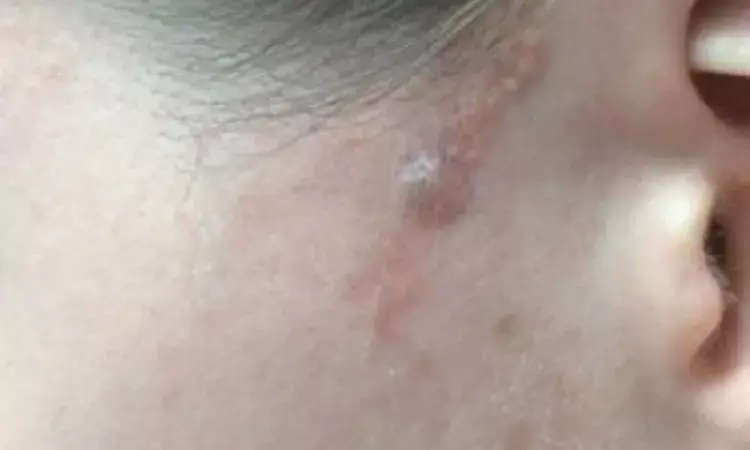- Home
- Medical news & Guidelines
- Anesthesiology
- Cardiology and CTVS
- Critical Care
- Dentistry
- Dermatology
- Diabetes and Endocrinology
- ENT
- Gastroenterology
- Medicine
- Nephrology
- Neurology
- Obstretics-Gynaecology
- Oncology
- Ophthalmology
- Orthopaedics
- Pediatrics-Neonatology
- Psychiatry
- Pulmonology
- Radiology
- Surgery
- Urology
- Laboratory Medicine
- Diet
- Nursing
- Paramedical
- Physiotherapy
- Health news
- Fact Check
- Bone Health Fact Check
- Brain Health Fact Check
- Cancer Related Fact Check
- Child Care Fact Check
- Dental and oral health fact check
- Diabetes and metabolic health fact check
- Diet and Nutrition Fact Check
- Eye and ENT Care Fact Check
- Fitness fact check
- Gut health fact check
- Heart health fact check
- Kidney health fact check
- Medical education fact check
- Men's health fact check
- Respiratory fact check
- Skin and hair care fact check
- Vaccine and Immunization fact check
- Women's health fact check
- AYUSH
- State News
- Andaman and Nicobar Islands
- Andhra Pradesh
- Arunachal Pradesh
- Assam
- Bihar
- Chandigarh
- Chattisgarh
- Dadra and Nagar Haveli
- Daman and Diu
- Delhi
- Goa
- Gujarat
- Haryana
- Himachal Pradesh
- Jammu & Kashmir
- Jharkhand
- Karnataka
- Kerala
- Ladakh
- Lakshadweep
- Madhya Pradesh
- Maharashtra
- Manipur
- Meghalaya
- Mizoram
- Nagaland
- Odisha
- Puducherry
- Punjab
- Rajasthan
- Sikkim
- Tamil Nadu
- Telangana
- Tripura
- Uttar Pradesh
- Uttrakhand
- West Bengal
- Medical Education
- Industry
Sirolimus cream treats common birthmarks without causing disfigurement: Study

USA: A recent case series reported in the Journal of the American Academy of Dermatology, suggests that topical sirolimus can be used in the management of nevus sebaceus (NS) and epidermal nevus (EN). This is especially for patients who decline surgical removal or have lesions in locations where surgery may result in disfigurement.
NS and EN are relatively common birthmarks whose treatment can be challenging as these lesions occur in locations where excision could cause disfigurement. Some patients decline surgery but still desire treatment to diminish the visibility of their birthmark. NS and EN are associated with activating mutations in the rat sarcoma virus pathway, which leads to cell growth. Sirolimus is an inhibitor of the mammalian target of rapamycin that acts downstream of this pathway, promoting cell cycle arrest.
Against the above background, Amanda G. Zhou and Richard J. Antaya from Yale University School of Medicine, New Haven, Connecticut, tested the efficacy of sirolimus cream in four patients with NS and EN.
Patient 1 was an 18-year-old man who had NS on the scalp which became itchy and thicker during puberty. Given the inhibitory effect of sirolimus on the rat sarcoma virus pathway, he was prescribed sirolimus cream 1% (ChemistryRx) twice daily. After 2 months, the NS was 90% flatter and remained stable even after the frequency of application was tapered to once weekly. He has been on this once-weekly regimen for 5 years. Four additional patients with NS and/or EN were treated with sirolimus cream 1% twice daily. The diagnoses of NS in patients 1 through 4 were established clinically by a pediatric dermatologist, and the diagnoses of EN in patients 2 and 5 were established clinically and confirmed using biopsy.
Patient 2, a 12-year-old boy, had NS in his left nasal fold and bothersome EN on his neck that recurred after a shave biopsy. He applied sirolimus cream to both the lesions for 2 years, with decreased size of both the lesions and flattening of the EN after 3 months of the treatment. He ultimately desired surgical excision and discontinued topical therapy.
Patient 3, a 15-year-old boy with NS on the forehead, had been applying sirolimus cream for 1.75 years and noted thinning of the NS after 4 months.
Patient 4, an 18-year-old woman with NS on the scalp, observed thinning of the NS after using sirolimus cream for 2 months; however, the treatment was discontinued after 1 year because of surgical excision of a recurrent trichilemmoma within her nevus. Trichilemmomas are known to be associated with NS and are also frequently associated with rat sarcoma virus-activating mutations. 3 Patient 5, an 11-year-old girl, was started on sirolimus for persistent EN on her neck; however, despite improvement after 1 month, the treatment was withheld because of flakiness, itchiness, and redness. With regard to adverse effects, patients 2 and 3 also had mild irritation; patient 2 was prescribed topical hydrocortisone, and sirolimus was continued without further event.
Topical sirolimus is not readily absorbed into the skin and has a favorable safety profile, with no reported systemic adverse effects. 4 It has been well studied and has been used to treat conditions such as angiofibromas, lymphatic malformations, and EN with features of acanthosis nigricans.
"This case series suggested that topical sirolimus can be used in the management of EN and NS, especially in patients who decline surgical removal or have lesions in locations where surgery may result in disfigurement," concluded the authors. "However, additional studies investigating topical sirolimus for the treatment of EN and NS are needed to further explore this effect."
Reference:
The study titled, "Topical sirolimus therapy for nevus sebaceus and epidermal nevus: A case series," is published in the Journal of the American Academy of Dermatology.
DOI: https://www.jaad.org/article/S0190-9622(21)02365-3/fulltext
Dr Kamal Kant Kohli-MBBS, DTCD- a chest specialist with more than 30 years of practice and a flair for writing clinical articles, Dr Kamal Kant Kohli joined Medical Dialogues as a Chief Editor of Medical News. Besides writing articles, as an editor, he proofreads and verifies all the medical content published on Medical Dialogues including those coming from journals, studies,medical conferences,guidelines etc. Email: drkohli@medicaldialogues.in. Contact no. 011-43720751


